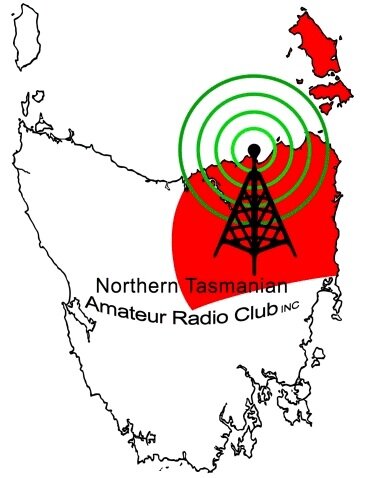Endurance Ride - St Helens
NTARC, assisted by a contingent from WICEN (South), provided rider tracking and safety communications for a new equine endurance event, based out of the St Helens Equestrian Grounds, run by the Suncoast Pony and Riding Club under the Portland Endurance Riders banner. The track included part of the 2011 State Championship course which, as a lead up event to the 2012 Tom Quilty Cup, was familiar to those assisting at those events; made famous by the two much published photos by Norm VK7KTN, of the early morning riders emerging from the frosty surrounds and the other, by Justin VK7TW, of the camp fire and lighting at a Tom Quilty overnight checkpoint - which is still the frontpage image of the WICEN Australia Facebook page. Those events were wonderful examples of co-operation between all the Tasmanian Amateur Radio clubs (and the Tasmanian Land Rover Owners Club).
At St Helens this time were, from NTARC, Idris VK7ZIR, Stefan VK7ZSB, Andre’ VK7ZAB, Peter VK7SP, Peter VK7KPC, Roger VK7ARN and from WICEN, Justin VK7TW, Anthony VK7AG and Randall VK7VWK. Worth noting in the context is the dual membership of some of the group.
All were in St Helens over Friday and Saturday night, split between the toughies camping at the ride Base and the softies at more salubrious accommodations in town (though the toughies did take up the invitation to spend some after dinner time in the better chairs provided in the lounge of one of the softie accommodations). The whole group dined on both evenings at a St Helens eatery and were supplied by the ride organisers with egg and bacon sandwiches for early breakfast on Saturday morning.
Having dealt with the social side of things - now to the task. There were three rides, sharing parts of the one track. The 20 km riders went part way and then turned back. The 40 km did one loop of the 40 km long track, whilst the 80km riders did two loops of the same track. It’s often difficult for ride organisers to find tracks with an optimum of surfaces and outlooks, but the consensus was that this one well ‘fitted the bill’, with a combination of open paddocks, a quiet country road and a great stretch of forest tracks. Between them, the three checkpoints covered each of these types, though the paddock coverers, Idris and Stefan, did so from the garden of the property hosting the repeaters, partially sheltered from the strong winds, under the roof of an open fronted workshop. Though, they did face the hazard of signage being run over by a four-wheel drive.
Although there were only three physical checkpoints, multiple passes resulted in seventeen checkpoints in all. Communications were good, though the most distant checkpoint caused some consternation by putting the Radio Mobile software pre-work to one side in attempts to meet a late notified ride organiser need. After much trying, the original software derived site was used successfully and the organiser’s need met by early morning placement of more track signage by the checkpoint crew.
All crews departed St Helens for home at various times on Sunday morning. The main NTARC group towing the safety comms trailer. I note that two of the toughie campers appeared, from my APRS observations, to soften up somewhat and divert from their intention to bag a peak for Summits on the Air on the way home. Instead, they looked to wallow at sea level and focus cameras, through the rain, on the heavily breaking wind driven surf and Bicheno blow hole.
Captured by a passing drone.
The cake was generously shared - here and elsewhere.














